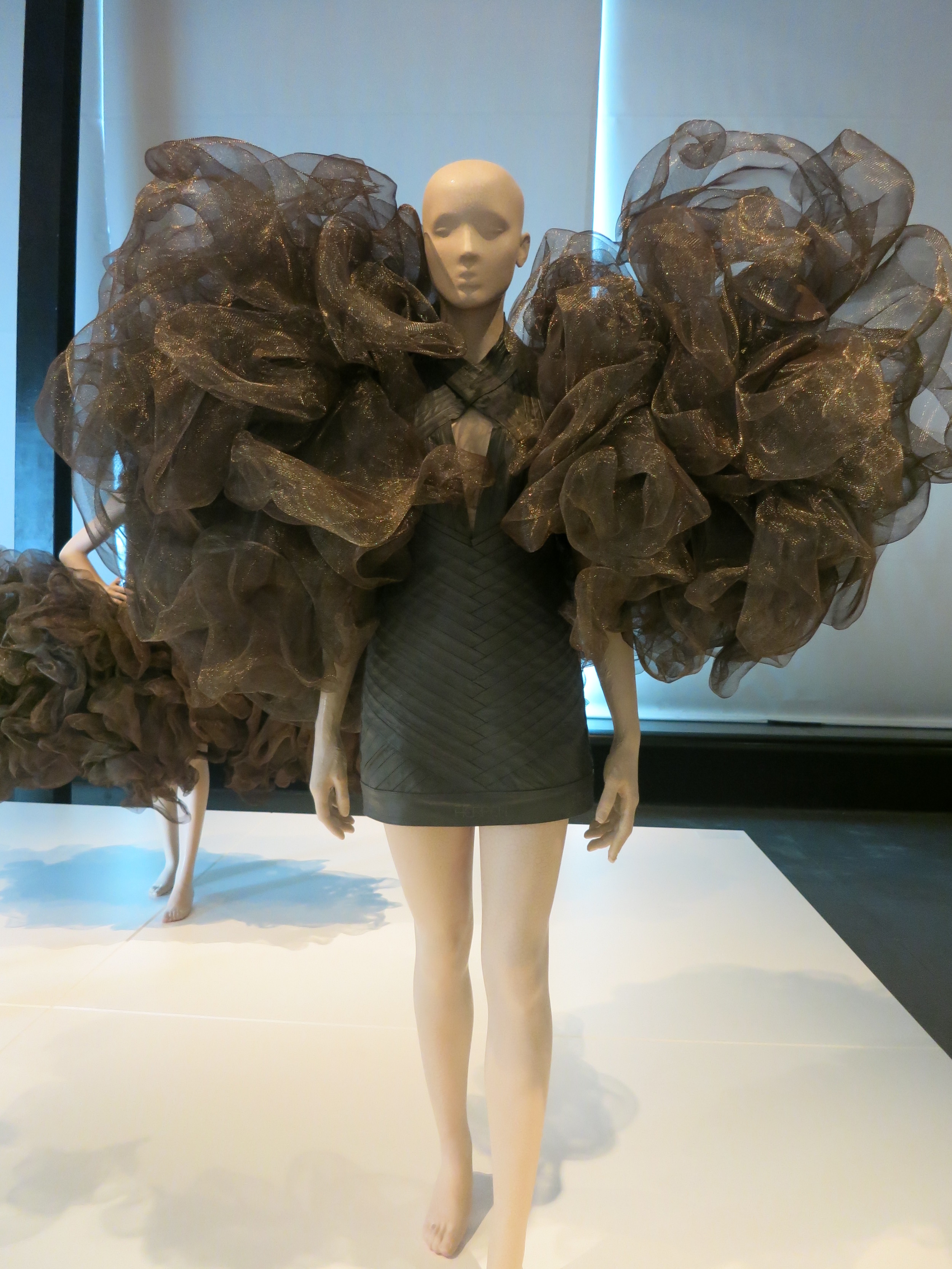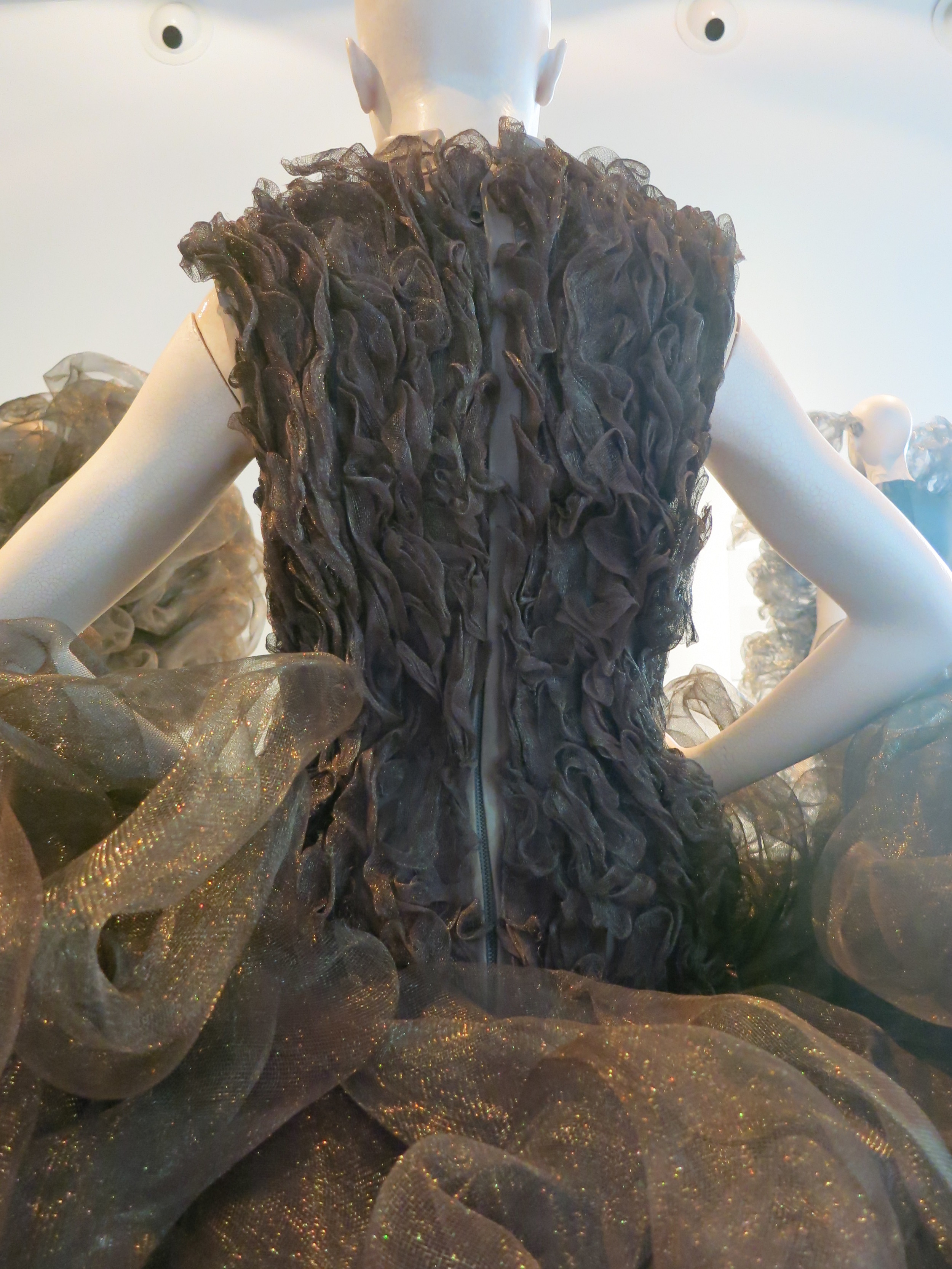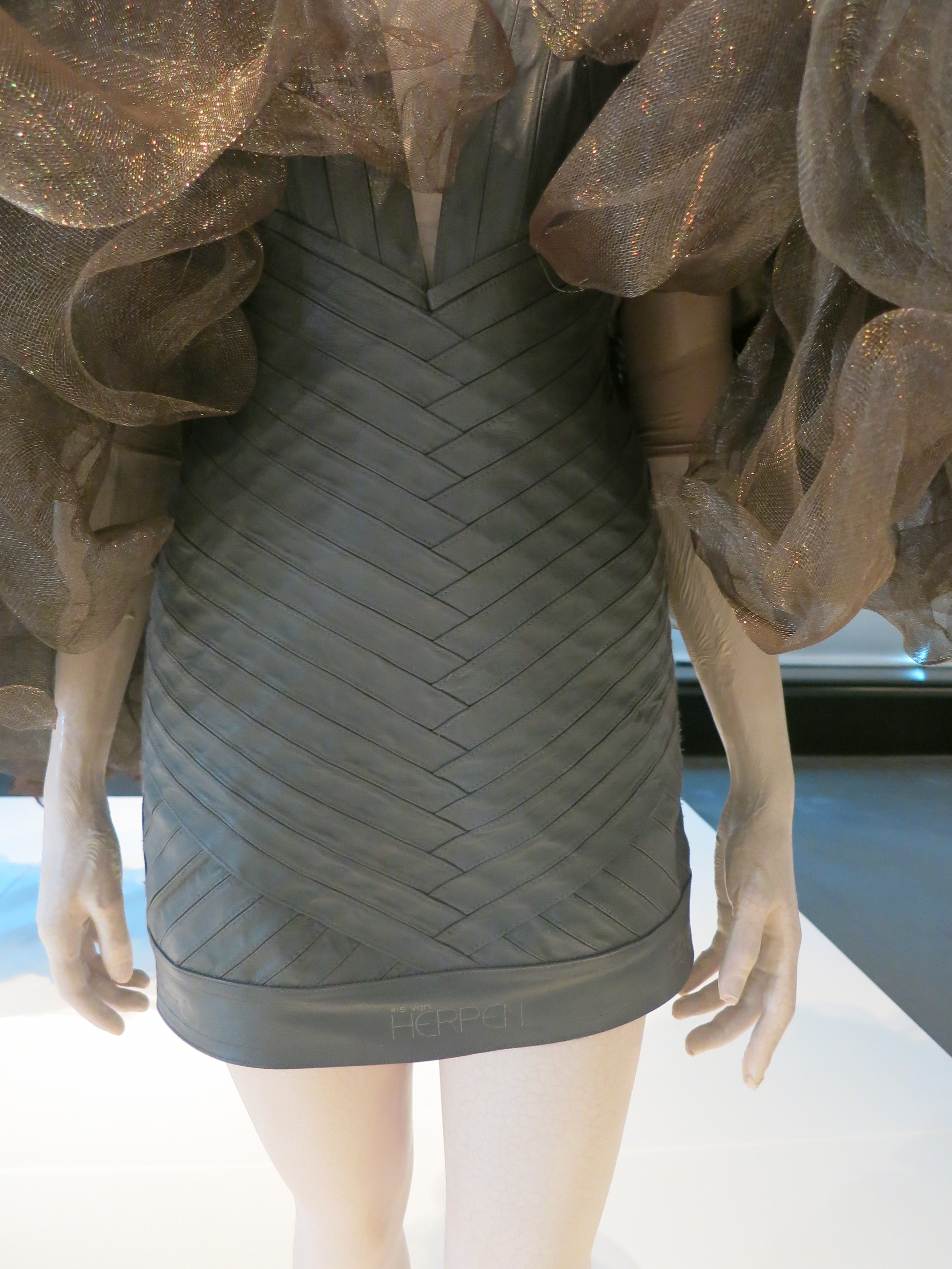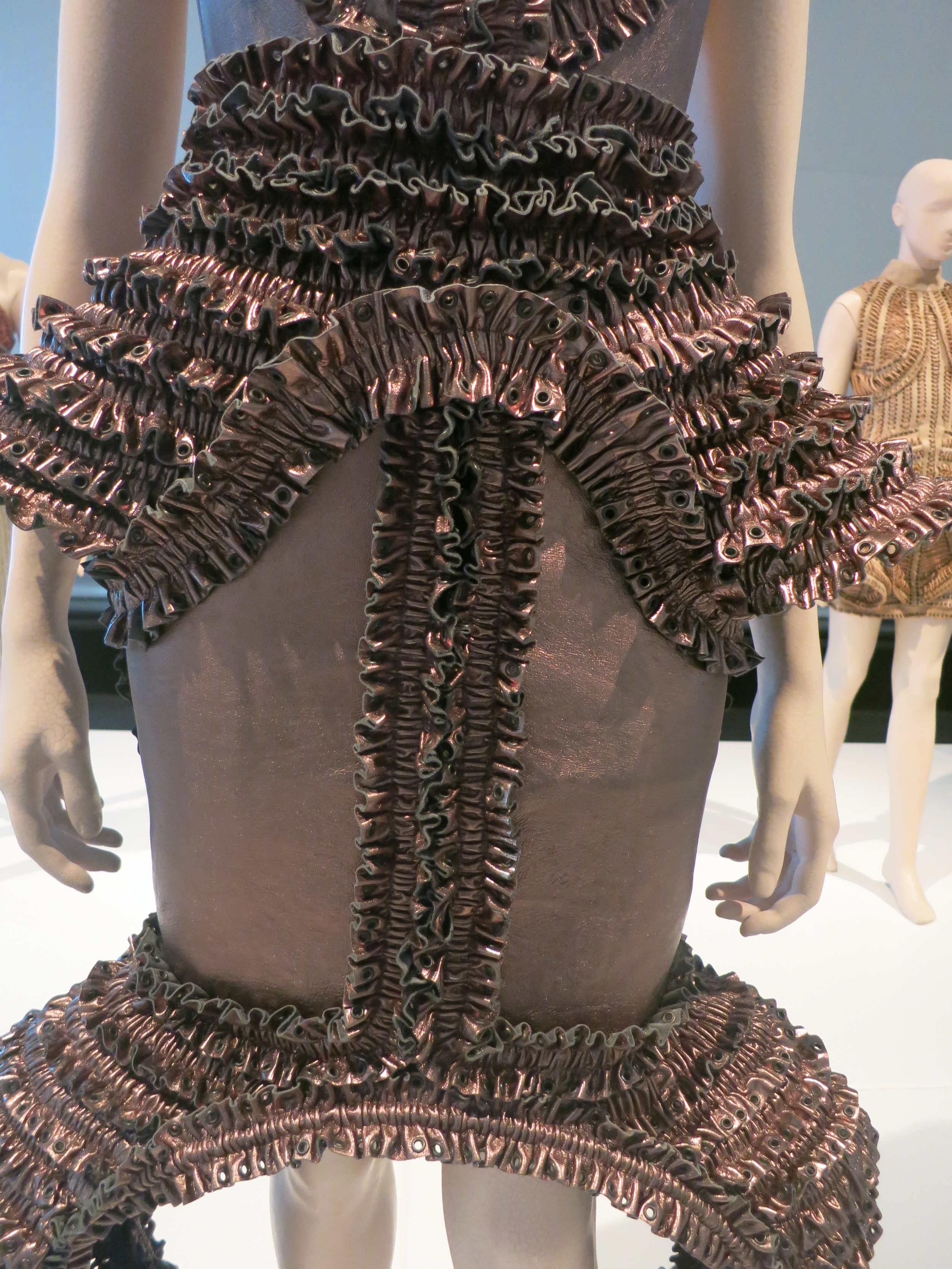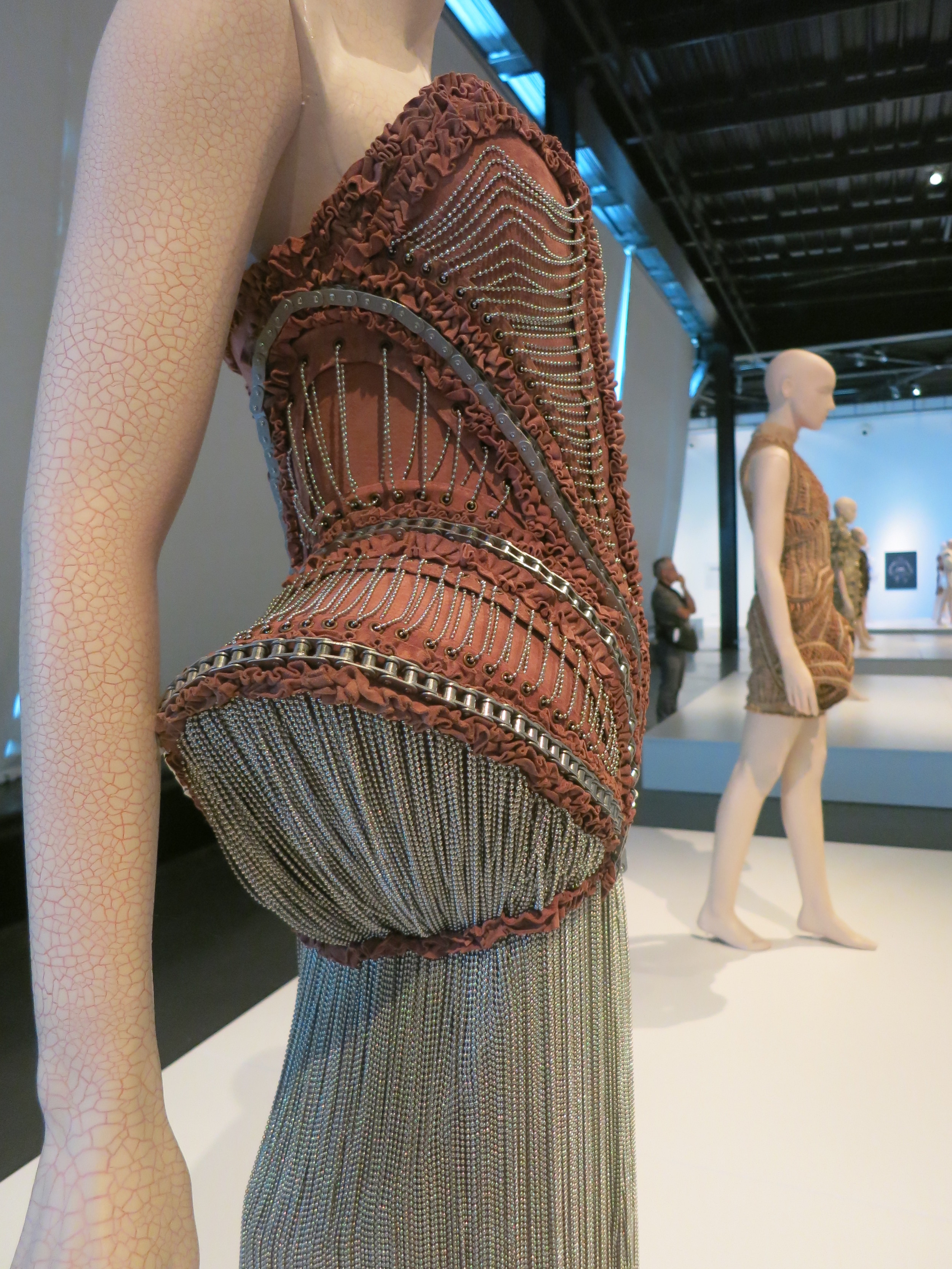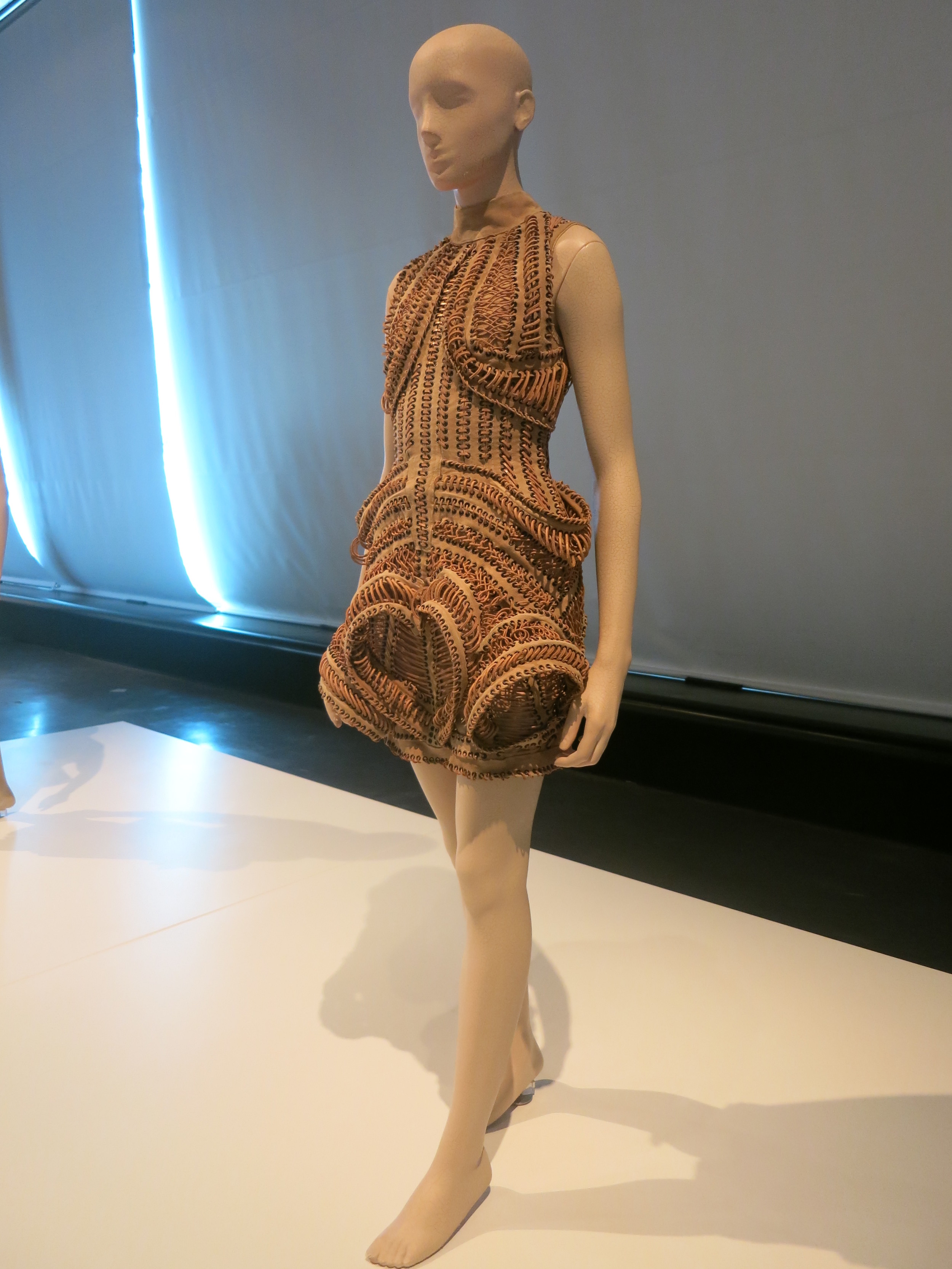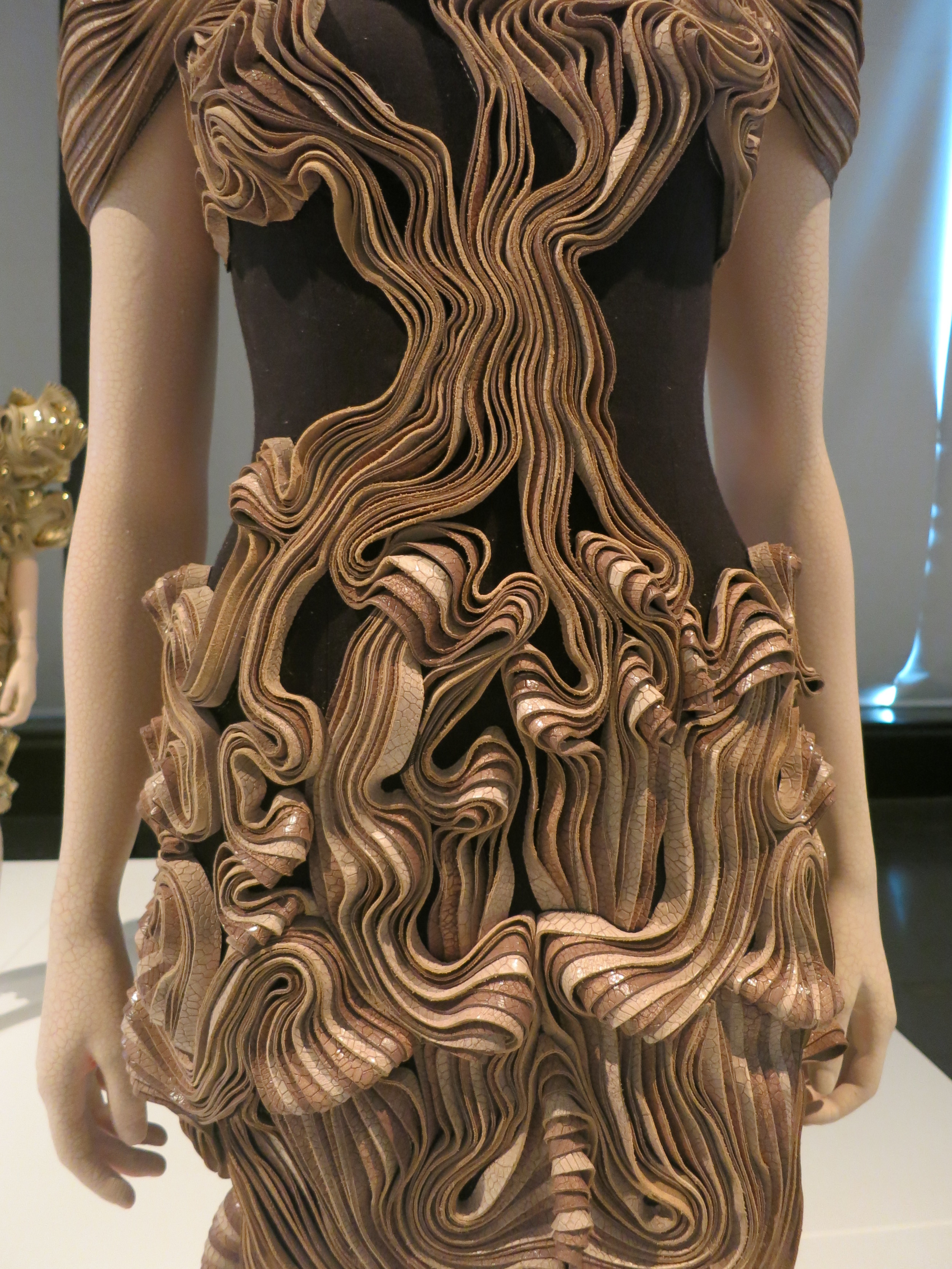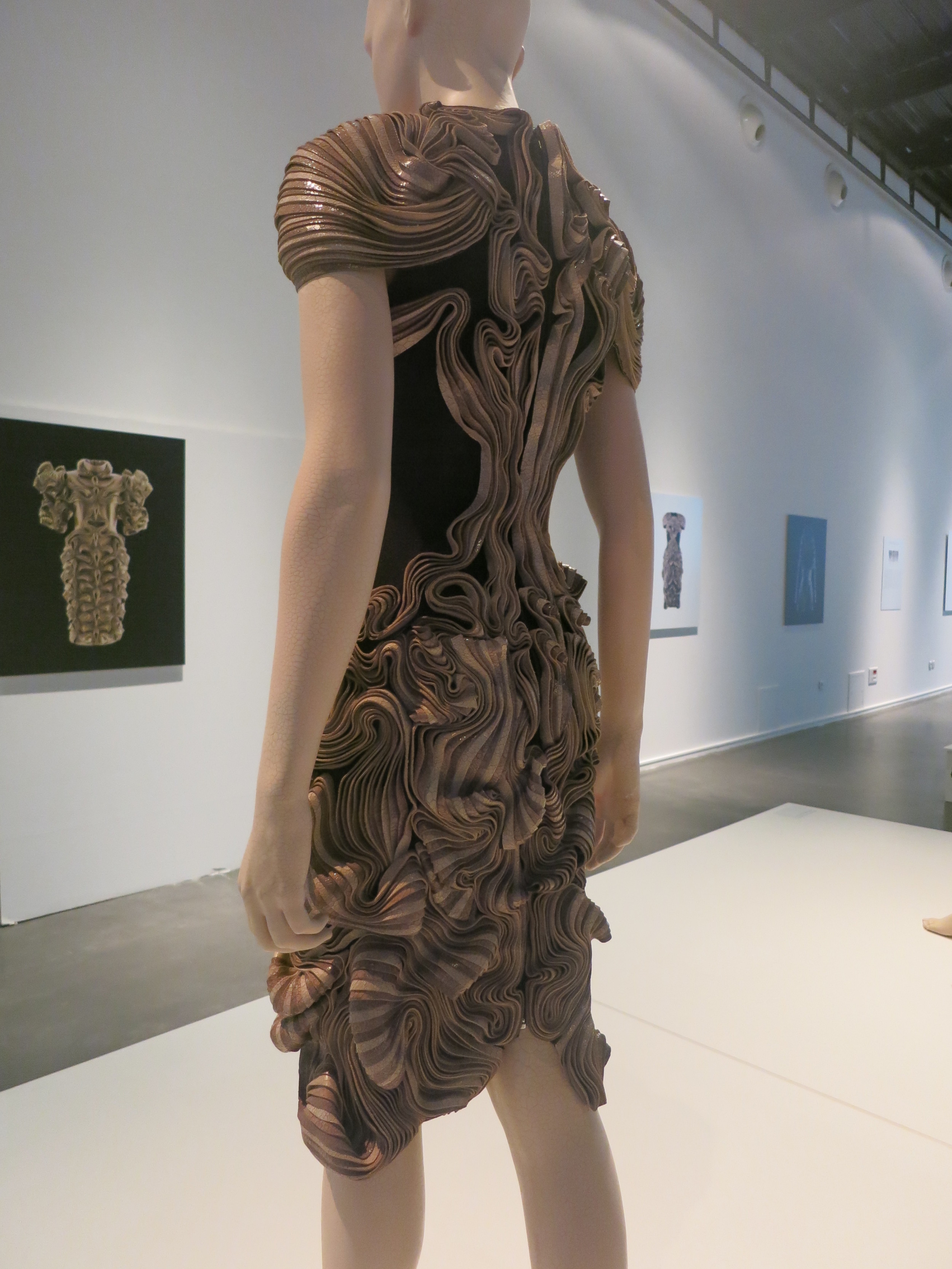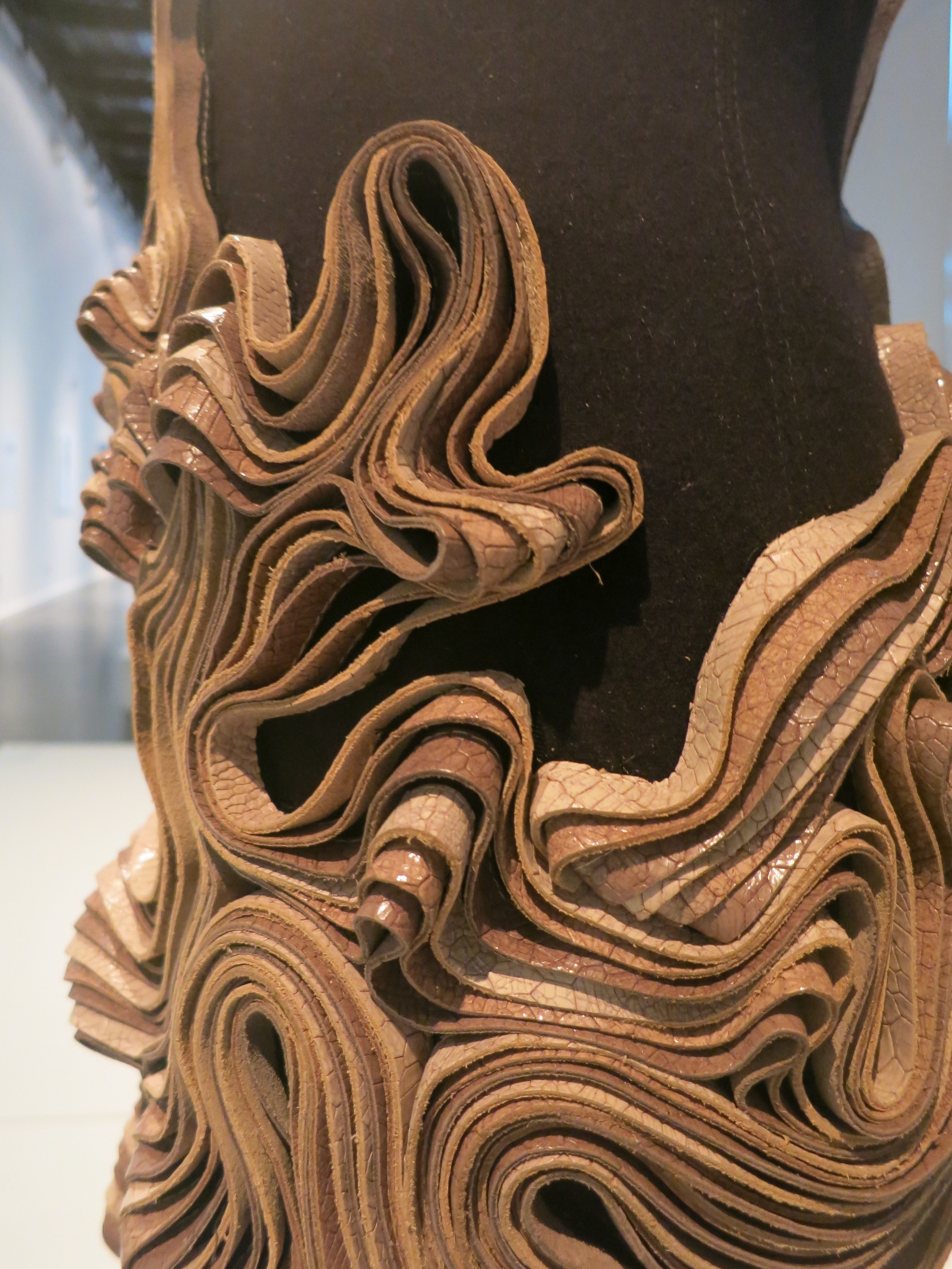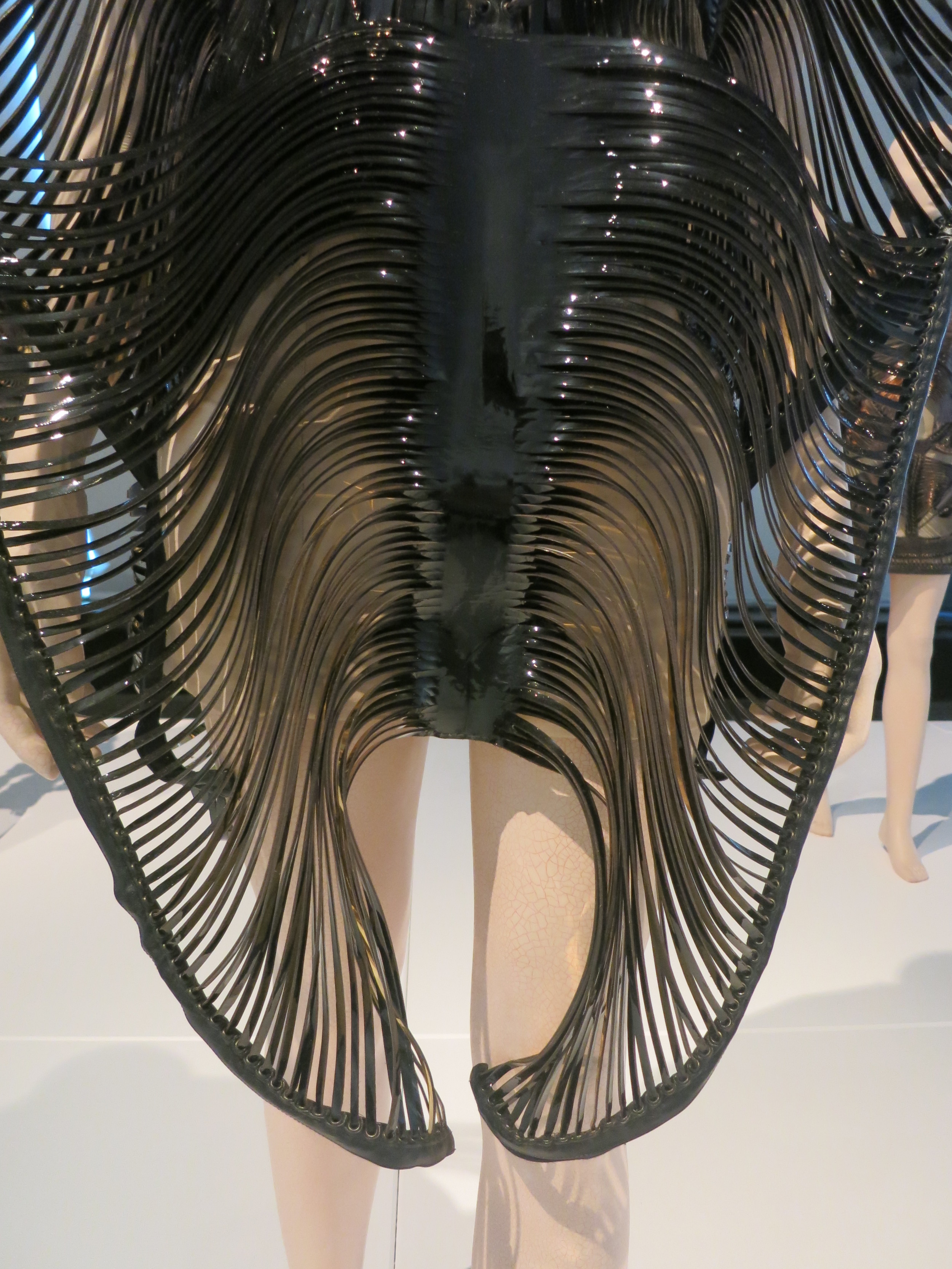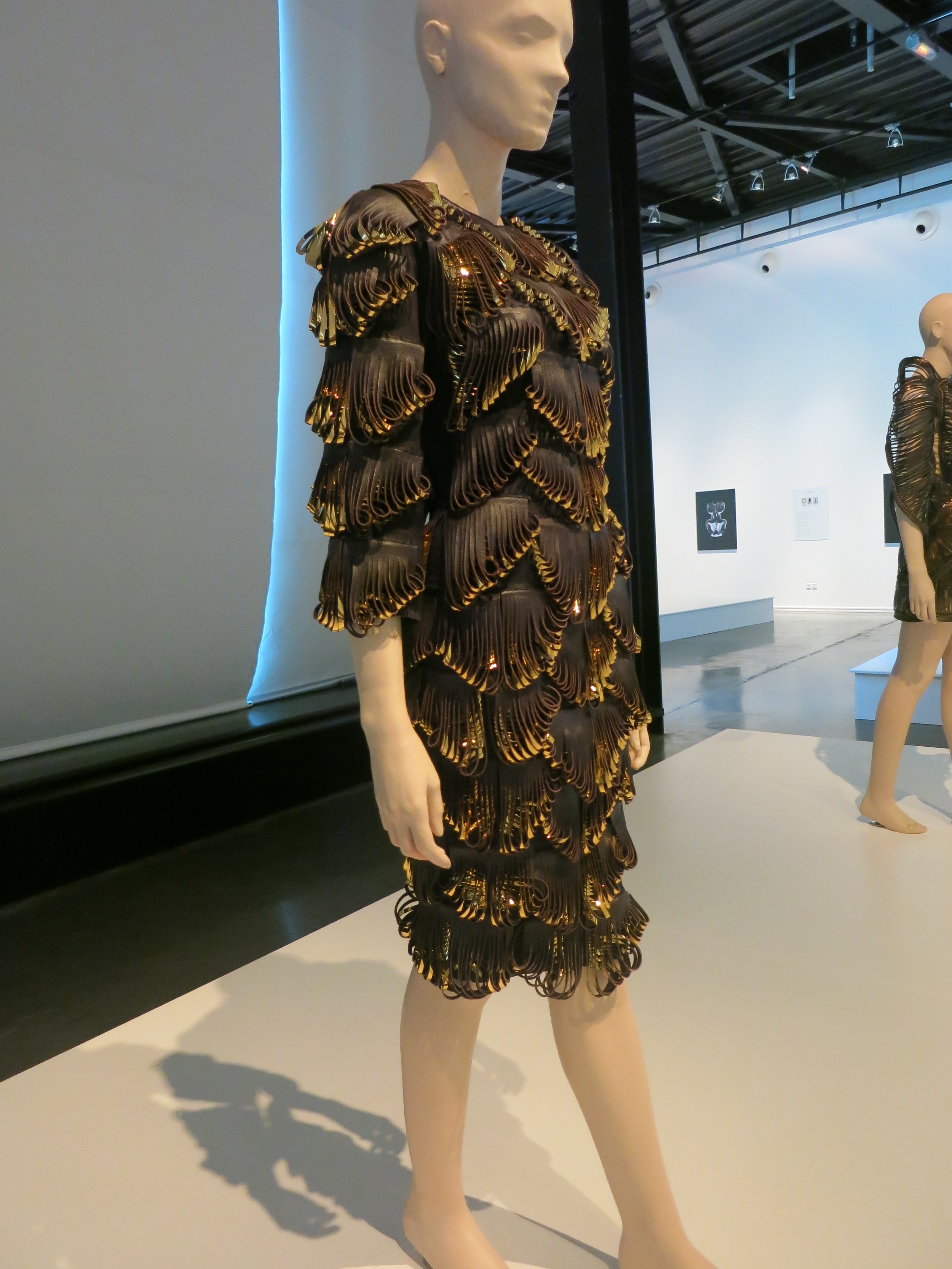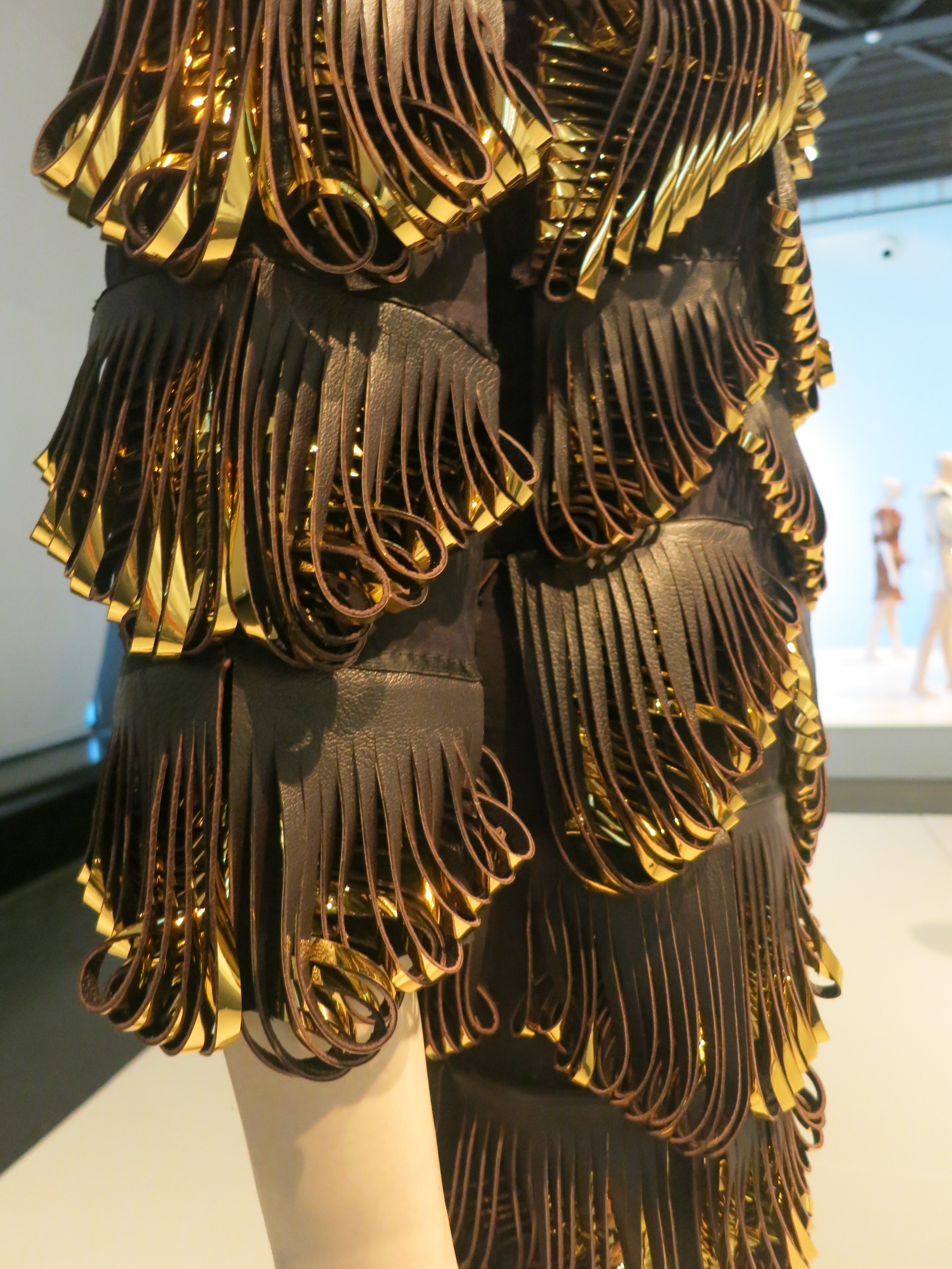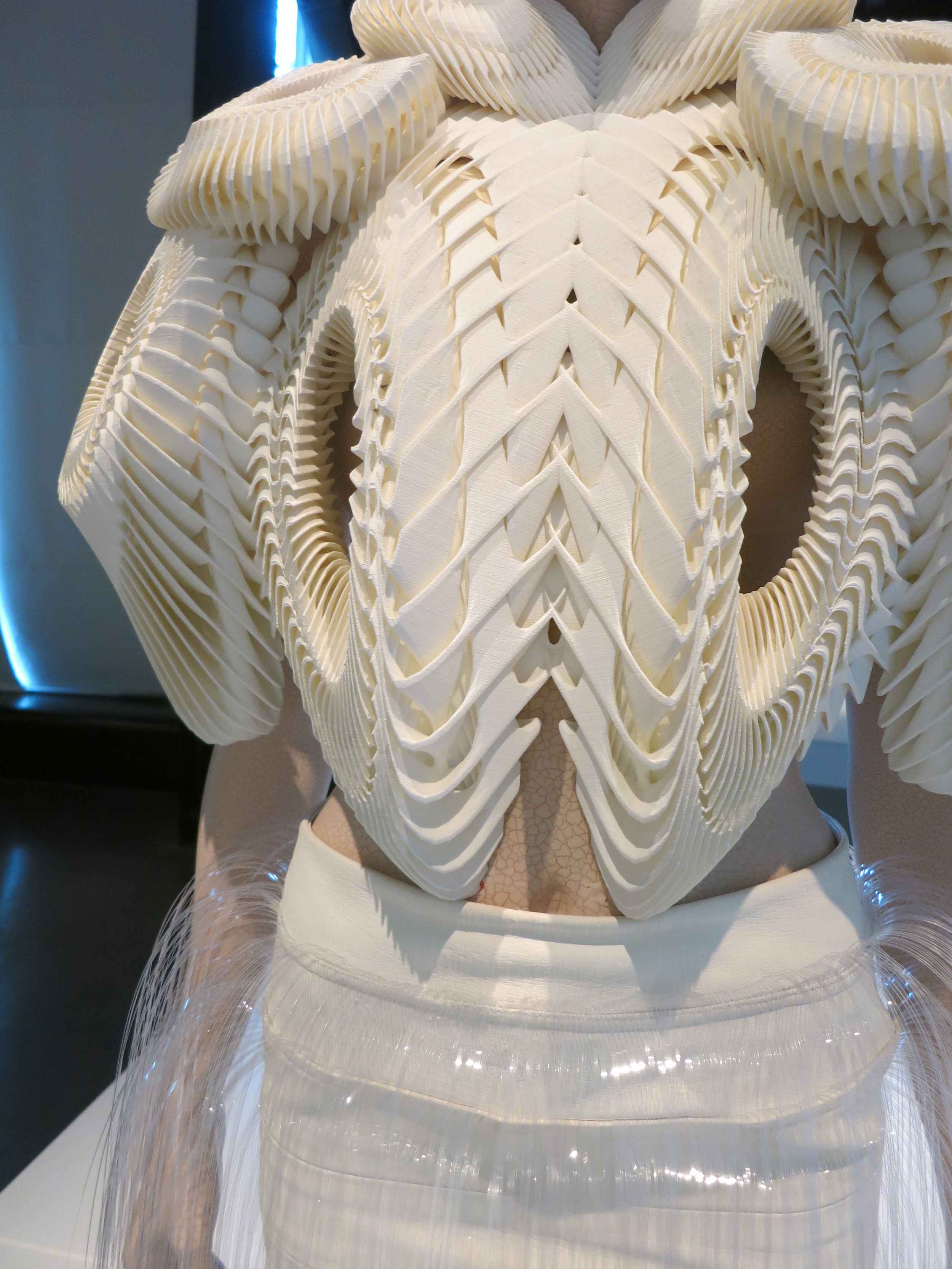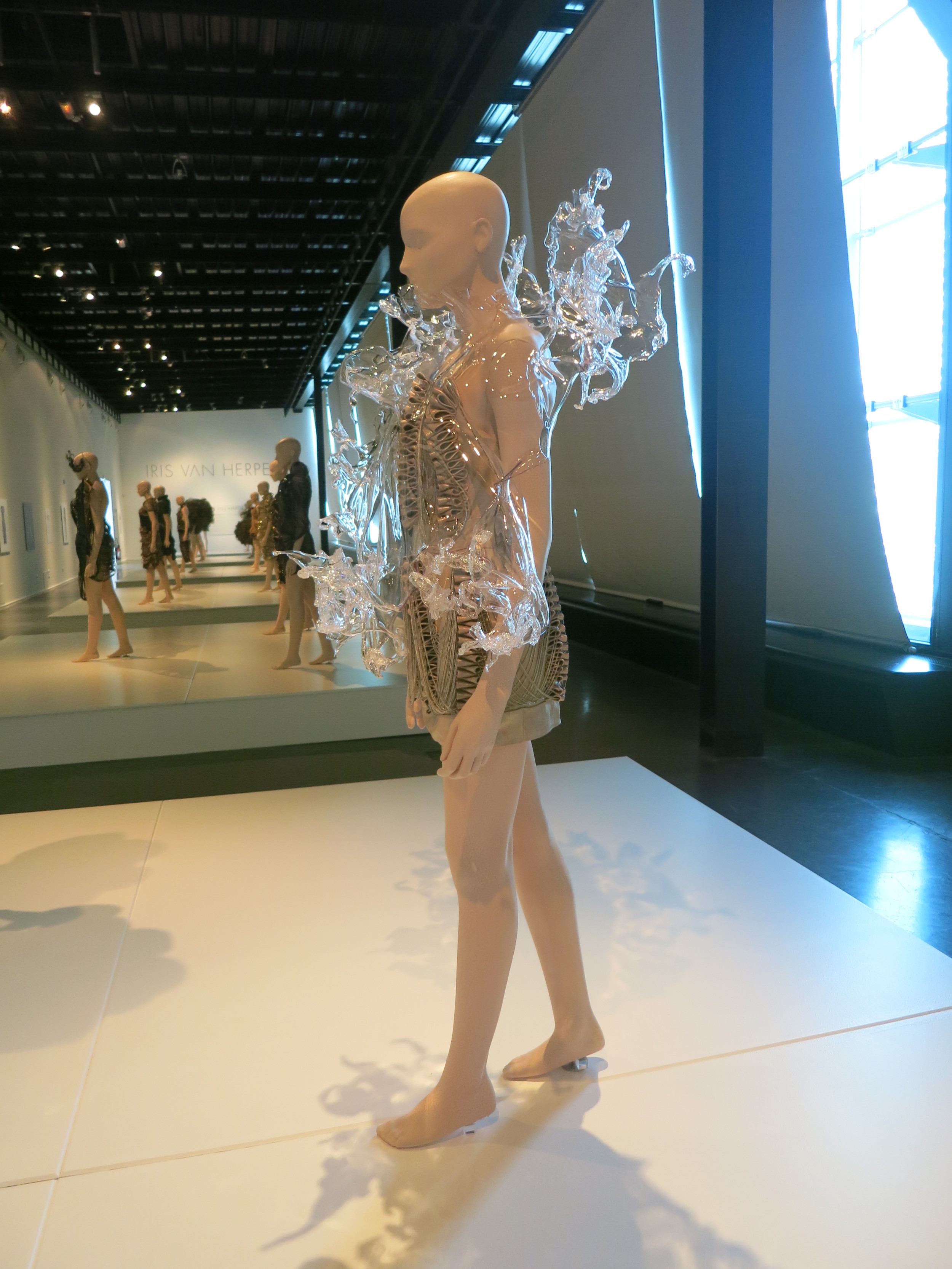The Calais Lace Museum has a permanent collection of work and machinery from the the city's lace industry, but they also have spectacular exhibitions of contemporary lace or lace-informed works. I was elated to be able to catch this Iris van Herpen exhibition while in Europe in 2013.
Iris van Herpen exhibition at the Calais Lace Museum 2013 - 'REFINERY SMOKE' 2008
This collection is based on the 'illusiveness of industrial smoke. Seen from a distance, smoke provides a fascinating spectacle: at times it seems to be alive but also harbours something sinister as it is often toxic'. These ideas were expressed through manipulating metal gauze which had been subjected to a process to make it soft and pliable. The dresses were a silvery-grey when first created but they have now oxidised to a reddish-brown.
Iris van Herpen exhibition at the Calais Lace Museum 2013 - 'MUMMIFICATION' 2009
This collection was informed by the ancient Egyptian practice of mummification. The idea of wrapping the body is clearly evident in this collection as are the geometric patterns created by the method of wrapping of bodies.
Iris van Herpen exhibition at Calais Lace Museum 2013 - 'RADIATION INVASION' 2009
Iris van Herpen was interested in the 'constant flow of digital information surrounding us in the form of rays.....these rays can only be received through the use of special equipment'. In this collection van Herpen 'expresses the idea that in the future it will be possible to perceive these rays and even mentally manipulate them to change shape'.
Iris van Herpen exhibition at the Calais Lace Museum 2013 - 'SYNESTHESIA' 2010
'Using specially treated leather coated on one side with shiny metallic foil, she creates a bewildering visual effect that makes it difficult for the viewer to understand exactly what she or he is observing'.
Iris van Herpen exhibition at the Calais Lace Museum 2013 - 'CRYSTALLIZATION' 2010
This collection is all about water in its liquid and frozen states. Iris van Herpen collaborated with Bentham Crouel Architects to be able to use a plexiglass-like synthetic to represent the 'splash' around one of the dresses in this collection. This material was moulded with a heat gun. The 3-D printed armadillo-like breast plate was done in collaboration with Daniel Widrig.

